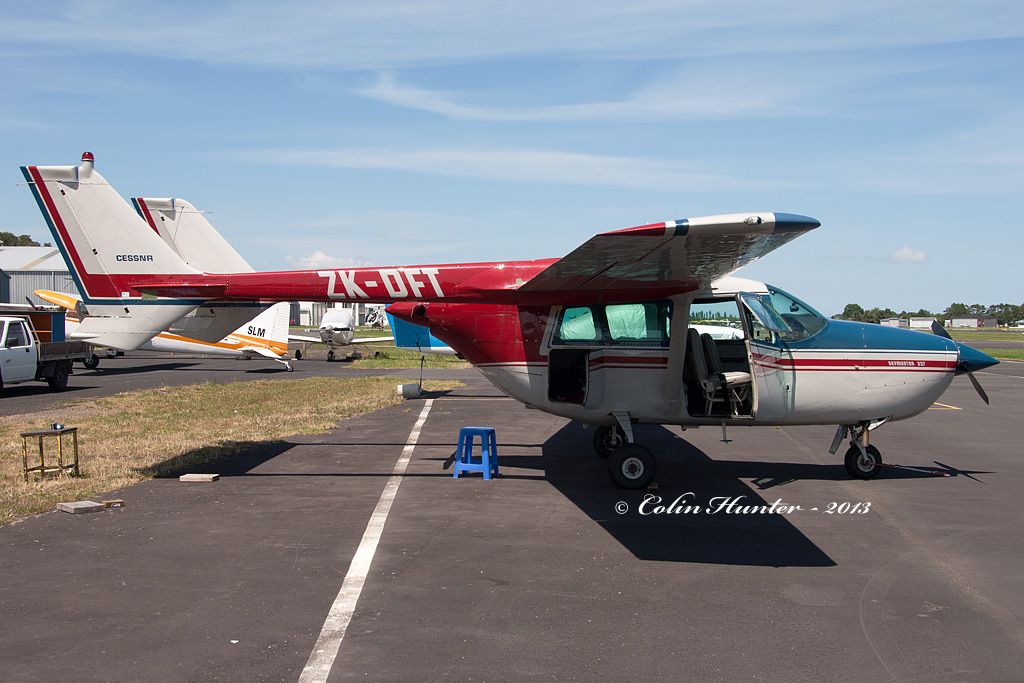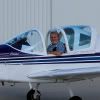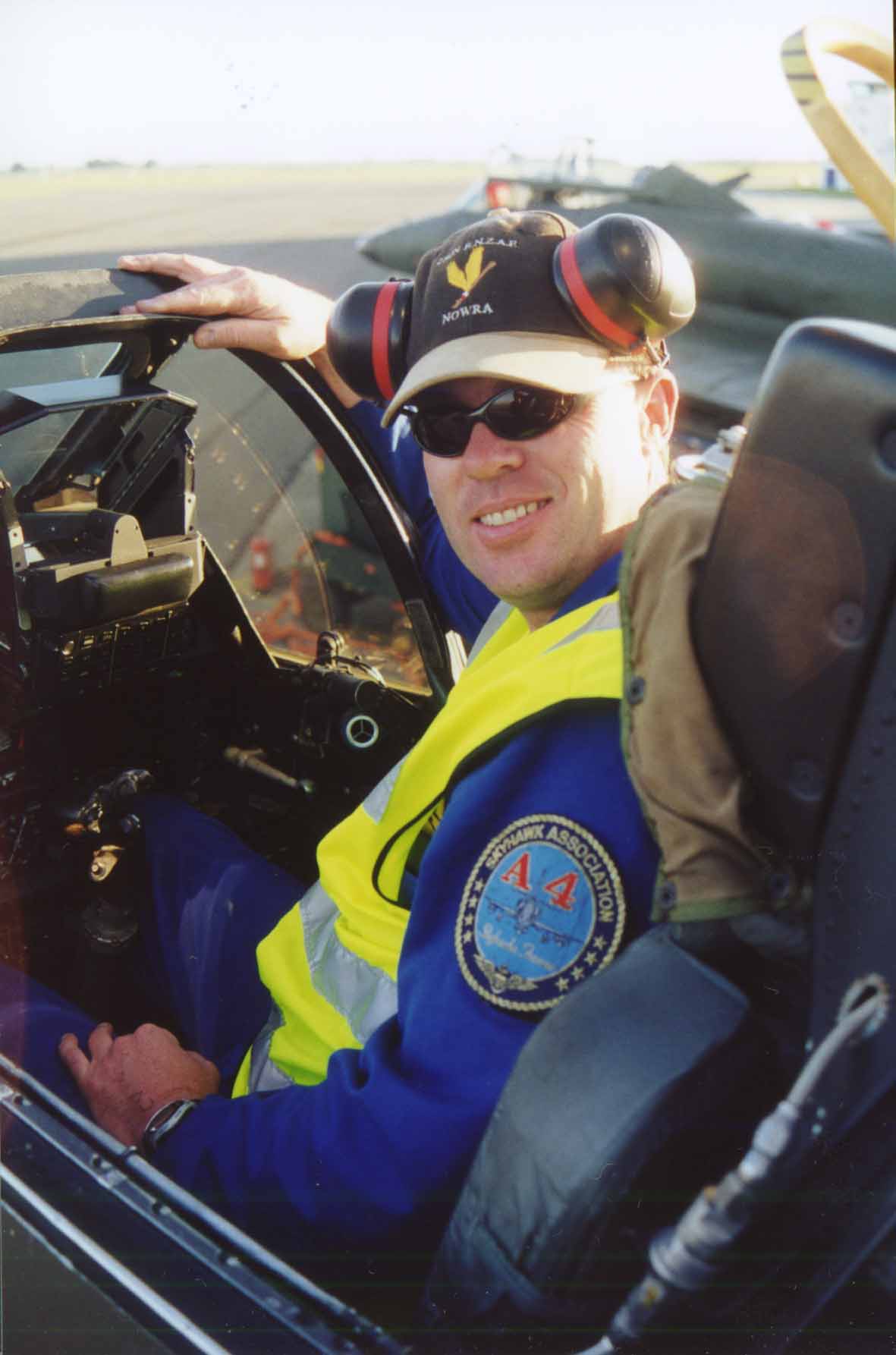|
|
Post by kiwithrottlejockey on Sept 11, 2013 18:16:26 GMT 12
I can recall Peter Matich (Taupo Flying School and Air Central) having a Cessna 337, and I can distinctly remember him attempting to interest some of the more experienced members of the Hawke's Bay Skydivers Club into attempting a salvage of an abandoned ship off East Cape back in the 1970s. He hatched a plan to fly skydivers in wetsuits out to the ship, then shut-down the rear engine while they forced the door open and jumped out, claiming salvage rights on his behalf. From memory, none of the skydivers were too keen on the idea.
I just dug out the book Heartland Flyer — The Story of Air Central from one of my bookcases, and in Appendix 2 are the following entries....
ZK-DAQ Cessna 337C Super Skymaster (c/n 337-00795)
ZK-DAQ was used to pioneer new areas of operation and played a significant role in the development of both the Taupo Flying School and Air Central. It was the Taupo Flying School's first twin-engine aircraft, being registered to the company on 26 July 1971. It allowed the company to expand its capabilities in the air charter and air taxi market, and in 1974 was the aircraft the company used to gain official approval to operate under instrument flight rules. Along with its sister aircraft, ZK-DFT, it was used to back up the Cessna 402s in airline service from late 1975. On 30 January 1976 the registration was transferred to Air Central. Five years later, on 31 March 1981, it was destroyed when the hangar of Pacific Aviation at Rotorua was burnt to the ground. The registration was cancelled on 7 July 1981.
ZK-DFT Cessna 337 Super Skymaster (c/n 337-00176)
Although an older model than ZK-DAQ this aircraft was slightly faster. It joined the Taupo Flying School in 1974, being registered to the company on 21 January. The registration was transferred to Air Central on 30 January 1976 and it continued to fly with the airline for the next three years. When Air Central sold off its Taupo based operations to Taupo Air Services Ltd in late 1978 ZK-DFT was part of the deal, the registration being transferred on 8 March 1979. Thereafter it provided the new company excellent service for over sixteen years, being retained by them until 1995. Still on the New Zealand Civil Aviation Register in mid 2006.
|
|
|
|
Post by oj on Sept 11, 2013 22:59:04 GMT 12
I don't remember the rego, but there was a 336 operated by the Auckland Aero Club and flown quite extensively by George Bates (who later was an NZAIL staff member).
I had the pleasure of going up on a full-load test flight after a double engine overhaul at NZAIL. The flight included a full shut down and re-start of each engine in turn. I can confirm from the discussions at the time the single-engine performance was better on the rear.
I do not remember the pilots name that day, but the other pax were Dave Mundell, Roger Bootten (who logged some dual on this flight)and possibly Gary Blithe.
Yes the fuel cross-feed system was complicated and required careful management and all the selectors were overhead; not easy to read or operate with your head tilted back 80 degrees! Imagine that in an emergency, while trying to watch all the clocks as well.
I have a faint recollection that the particular aircraft was originally owned by NZ Forest Products and operated out of Tokoroa before it went to AAC.
somebody will know a lot more about it......?
|
|
|
|
Post by Peter Lewis on Sept 11, 2013 23:45:29 GMT 12
Auckland AC had ZK-CGF, the sole NZ C.336, from new.
Sold to R G Maisey, Taupo December 1971, to Gisborne Flying School Ltd. 14Apr1973, which morphed into Air Gisborne Ltd.from 25Jan1974.
DBR on t/off at Gisborne 24Apr1978, but reg canc not until 2Jun1982.
No record of a Skymaster being directly owned by NZ Forest Products, but I seem to remember reading that Auckland AC operated charter to NZFP at the time.
|
|
|
|
Post by johnnyfalcon on Sept 12, 2013 8:32:55 GMT 12
ZK-DFT now based in Wanaka I believe. That's it in the pseudo O-2 scheme above. After 1974 the fuel system was changed to a much simpler arrangement.
Scrooge, was it you that had to land ZK-KLB on its tummy at Whenuapai?
|
|
|
|
Post by DragonflyDH90 on Sept 12, 2013 8:37:05 GMT 12
Garth Hogan has one, pretty sure its DFT.
|
|
|
|
Post by scrooge on Sept 12, 2013 9:00:18 GMT 12
Not exactly- I was training and someone else was PinC.
|
|
|
|
Post by johnnyfalcon on Sept 12, 2013 17:23:18 GMT 12
...so you did. :-)
|
|
kiwicubber
Sergeant
 visit me @ www.supercub.co.nz
visit me @ www.supercub.co.nz
Posts: 12
|
Post by kiwicubber on Sept 23, 2013 21:07:33 GMT 12
I did about 900 hours in TSH. The aircraft was flown between Chatham Island and Pitt Island as well as Chathams and New Zealand. Mainly Napier, Gisbourne and Wellington, sometimes Christchurch. The aircraft was very versatile on both routes, pressurisation for the 'long haul' routes, and a STOL kit for the strips. I can't remember exactly how much runway we used, probably about 350-400 metres for takeoff with a cabin load of 500kg of crayfish with an hour or so of gas, then after refuel at Karewa take the same load 400+nm to NZ. Off a strip we got airborne at about 50 knots.
With centreline thrust it handled well, you could throw it round like a single, but had twin engined safety. On air transport ops we had to have a (asymmetric) multi instrument rating, but only were credited single engine time.
From memory on one engine with the gear down at MAUW it would climb at 120'/min, sink as the gear went up due to the gear doors, then climb at 240'/min. So you had to pick your time carefully to clean up. Of course feathering the dead engine was important.
I think it is a fallacy that they were easier to handle than an asymmetric multi. In a conventional multi the aeroplane tells you which engine has failed, (dead leg, dead engine). In a centreline thrust multi you need to check your instruments carefully to identify the dead engine. You only know of an engine failure in the first place by loss of performance, (unless of course there is a Big Bang, or fire or vibration), but you could lack performance because of windshear, or a muddy runway, or any number of other reasons. So careful trouble shooting is required, and all this potentially at low level after takeoff.
Overall I enjoyed flying the 337, but comparing with, say, a Baron with the same MAUW, speeds and payloads are within a few knots and kg. some of the strips we went into though were not suitable foe a Barron.
|
|
|
|
Post by suthg on Sept 24, 2013 17:34:51 GMT 12
Some background info on the Cessna 336 ZK-CGF Skymaster and NZFP management regional flights to Akld and back to Tokoroa/Kinleith The introduction of the Auckland Aero Club service, which featured ground transport from Mangere into Newmarket suited NZ Forest Product’s officials who needed to do a day’s business in either Auckland or at the mill at Kinleith. This association between the Auckland Aero Club and NZ Forest Products was to last many years with the Aero Club. While the public service disappeared semi-regular flights were made by the Club to Tokoroa carrying many NZ Forest Products' officials. Later NZ Forest Products helped fund the Aero Club’s purchase of Cessna 336, ZK-CGF Skymaster (c/n 336-0168). This was registered to the Aero Club on the 12th of March 1964 and operated by them until it was sold in December 1971.  link from here... 3rdlevelnz.blogspot.co.nz/2010/06/forestry-towns-businessliners.html3rdlevelnz.blogspot.co.nz/2011/03/air-services-through-tokoroa-index-of.html Continued story... In some ways the Club's service was too successful and the increasing usage of the Auckland Aero Club's Cessna 336 led to NZ Forest Products purchasing its own aircraft. Piper Pa23-250 Aztec D, ZK-CUS (c/n 27-4499). The Aztec was purchased in April 1970 and this became the mainstay of transporting company executives between Auckland and Tokoroa. The Aztec was operated until February 1978 when it was sold to Cookson Airspread of Wairoa. |
|
|
|
Post by FlyingKiwi on Sept 24, 2013 19:41:49 GMT 12
Incidentally CUS is still on the register and is owned by an Auckland Aero Club instructor.  |
|
|
|
Post by westland831 on Sept 25, 2013 21:22:31 GMT 12
|
|
|
|
Post by Kereru on Dec 16, 2013 12:07:05 GMT 12
ZK-DFT at AMZ today.  Cheers, Colin |
|
|
|
Post by sqwark2k on Dec 16, 2013 16:55:01 GMT 12
Thought I saw one on Ardmore Flying School's apron this weekend, just a brief glance but 337 came to mind.
|
|
|
|
Post by Radialicious on Dec 16, 2013 18:55:18 GMT 12
I remember briefly learning about the 337 during the propellor phase of my RNZAF aircraft mechanics course. We were getting our heads around the concept of variable pitch/constant speed props. It was interesting to learn, and makes good sense, that the two props operated with different blade angles for the same rpm. The rear prop had a coarser blade angle than the front as it was being asked to produce thrust in a relative airflow that was much faster than that of the front prop. As a result, it makes sense that the 337 has two sets of performance figures depending on which engine was operative or not.
|
|
fadge
Flight Lieutenant
 
Posts: 81
|
Post by fadge on Dec 16, 2013 18:55:39 GMT 12
There has been another one missed... ZK DSC. Geyserland Airways in Rotorua operated it for many years. Whilst John Burns owned it, a camera hatch was also fitted. Used to do a lot of vertical photography for NZFP.
|
|
|
|
Post by skyhawkdon on Dec 16, 2013 19:46:47 GMT 12
I got to go for a fly in THL when we were based out of Timaru on Wise Owl 67 in Dec 96. I had a rostered day off and found out the THL chief engineer was heading down to Queenstown and Mt Cook in the 337 to do some maintenance on the helicopters, so I hopped on board and had an amazing day. Had lunch in Queenstown with the folks then on to Mt Cook (Glentanner?) airfield. While there I got two helicopter rides, including an amazing snow landing way up in the Southern Alps. I did partially earn my keep, as I helped install a 2-way radio in a THL van and trouble shoot a instrument problem in a Squirrel while we were there (plus I think I might have bought a few beers back in the bar at Timaru!). I also remember the two Macchis that beat up the Glentanner airfield while we were there! For some reason I didn't have my camera with me that exercise so no photos of any of it sorry. But it was one of the better days off I can recall!
|
|
|
|
Post by skyhawkdon on Dec 16, 2013 19:50:48 GMT 12
Garth Hogan has one, pretty sure its DFT. In 2011 Garth still had it in his amazing "garage" under the house, but it was for sale along with his ex RAAF CT-4A (ZK-LJH). |
|
weheka
Squadron Leader
  
Posts: 105
|
Post by weheka on Dec 16, 2013 20:05:35 GMT 12
Peter, there was a pressurized one operated out of Hokitika for a short time by Westair, can't remember the rego off hand, think it was a 1974 model and quite tidy.
|
|
|
|
Post by baz62 on Dec 16, 2013 21:39:09 GMT 12
I remember briefly learning about the 337 during the propellor phase of my RNZAF aircraft mechanics course. We were getting our heads around the concept of variable pitch/constant speed props. It was interesting to learn, and makes good sense, that the two props operated with different blade angles for the same rpm. The rear prop had a coarser blade angle than the front as it was being asked to produce thrust in a relative airflow that was much faster than that of the front prop. As a result, it makes sense that the 337 has two sets of performance figures depending on which engine was operative or not. I was chatting to Johnny about the 337 and he was telling me that they had to implement a revised takeoof procedure with the 337 in that when you opend the throttles you opened up the rear engine first before the front engine. Why? Apart from looking at the RPM gauge you couldn't tell the rear engine was actually going so there were a few instances of the rear engine failing during taxi but going unnoticed by the pilot. With the noise of the front engine roaring away when both throttles were advanced for take-off there were a few surprised pilots when they didn't seem to be getting airborne! |
|
|
|
Post by area51 on Dec 17, 2013 7:37:34 GMT 12
Hokitika C337 was ZK-FZA. Imported via Timaru for NZCAA certification. It was bought to the Coast for air ambulance work but wasn't really the machine for the job. It is still registered and I understand is tucked away in a hangar at Ardmore.
|
|











